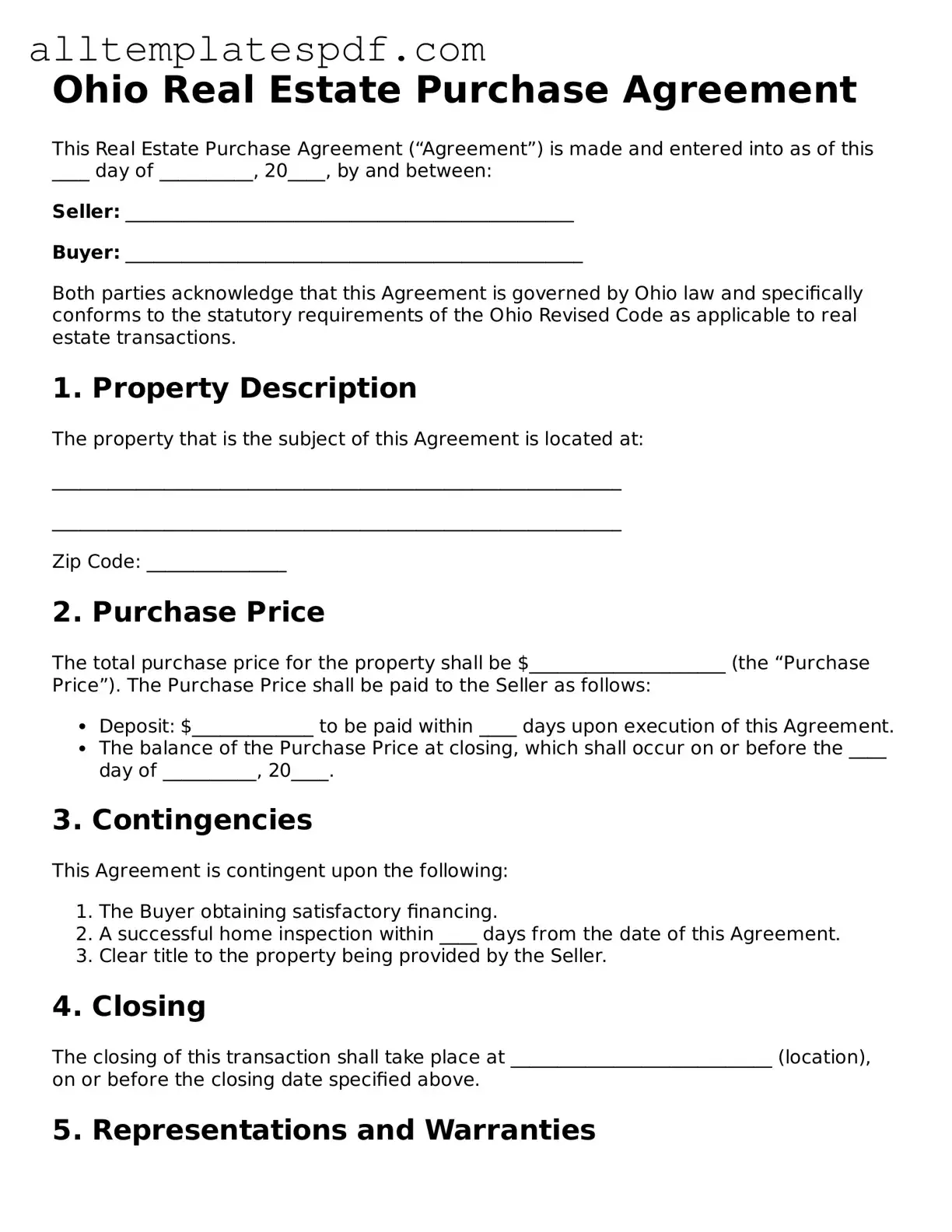Filling out the Ohio Real Estate Purchase Agreement form can be a straightforward process, but many people make common mistakes that can lead to complications later. One frequent error is failing to include all necessary parties. It's crucial to ensure that all buyers and sellers are listed correctly. Omitting a party can create legal issues down the line.
Another mistake is not providing accurate property details. The agreement should include a complete description of the property, including the address and any relevant parcel numbers. Incomplete information can lead to confusion and disputes between parties.
Many individuals also overlook the importance of clearly stating the purchase price. This figure should be explicit and easy to understand. If the price is unclear, it could lead to misunderstandings or disagreements later on.
People often forget to specify the earnest money amount. This deposit shows the buyer's commitment and is typically held in escrow. Without this detail, the agreement may lack essential security for the seller.
Another common oversight is neglecting to include contingencies. Buyers should outline any conditions that must be met before the sale can proceed, such as financing or home inspections. Missing these can leave buyers vulnerable to unexpected issues.
Inaccurate dates can also cause problems. Whether it's the closing date or the date the offer is made, all dates should be precise. Errors can lead to delays or confusion about when responsibilities begin and end.
Many people fail to read the entire agreement thoroughly. Skimming through the document can lead to missing critical clauses or conditions that could affect the transaction. Taking the time to read carefully can prevent future headaches.
Another mistake is not consulting with a real estate professional or attorney. While it may seem tempting to handle everything independently, having expert guidance can help avoid pitfalls and ensure that the agreement is valid and enforceable.
Some individuals forget to include a provision for repairs or maintenance before closing. Addressing who is responsible for repairs can save both parties from disputes after the sale.
Lastly, people sometimes neglect to sign and date the agreement correctly. Without proper signatures, the document may not hold up in a legal context. Ensuring that all parties sign and date the agreement is essential for its validity.
